Types of Supplier Management Tools for Easier Procurement


Have you thought about the tech you use to manage suppliers?
With modern procurement evolving fast, the right tools are essential for efficiency—helping you onboard suppliers, manage risks, and strengthen relationships.
Even if you’re using common systems, staying updated on new technologies can give you an edge—or even introduce you to a tool you didn’t know existed.
In the next sections, we’ll discuss six types of supplier management tools, explore their key features, and provide examples to help you get started.
First, we have supplier sourcing tools, which are the backbone of any good supplier management practice.
These tools help you discover and evaluate potential suppliers, ensuring you’re working with the best partners for your business.
In terms of features, there are two main types of sourcing tools to consider.
The first type streamlines the documentation, negotiation, and decision-making phases of vendor selection.
These tools help you collect information from potential suppliers, compare their offerings, and make data-driven decisions.
A good example is ProcurePort, an e-sourcing software that includes features like RFI and RFQ form builders, making it easy to standardize and analyze supplier data.
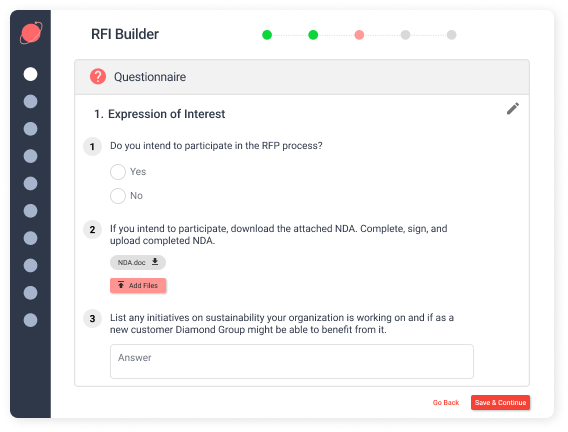
Source: ProcurePort
Plus, ProcurePort has features for automating manual data entry, comparing supplier quotes, and negotiating with suppliers.
These types of tools are ideal if:
Another type of sourcing tool provides an easily searchable, comprehensive supplier database.
This is invaluable for finding new suppliers quickly and efficiently, especially when expanding into new markets or product categories.
One such service is Veridion, our AI-powered supplier sourcing platform with a database of over 120 million suppliers across more than 210 million locations worldwide.
When searching for something as broad as car parts, Veridion provides a wide range of suppliers in seconds:
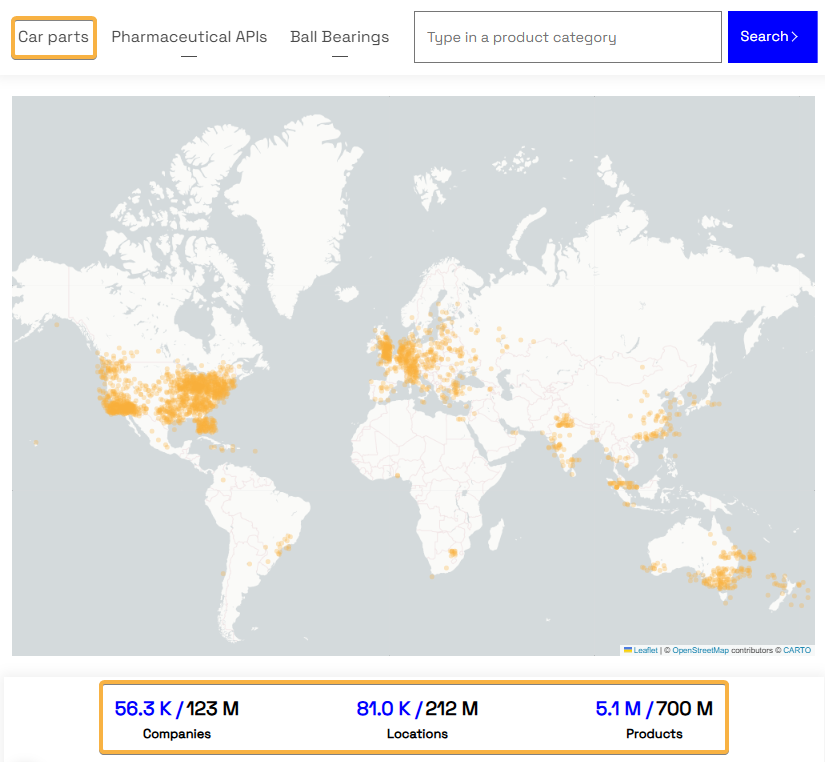
Source: Veridion
This vast amount of data is easily accessible through two APIs:
So, whether you are sourcing new suppliers or enriching your supplier data, these APIs make the process seamless.
As you can see below, the result of sourcing suppliers with Veridion is significantly faster and more efficient than manual searches.
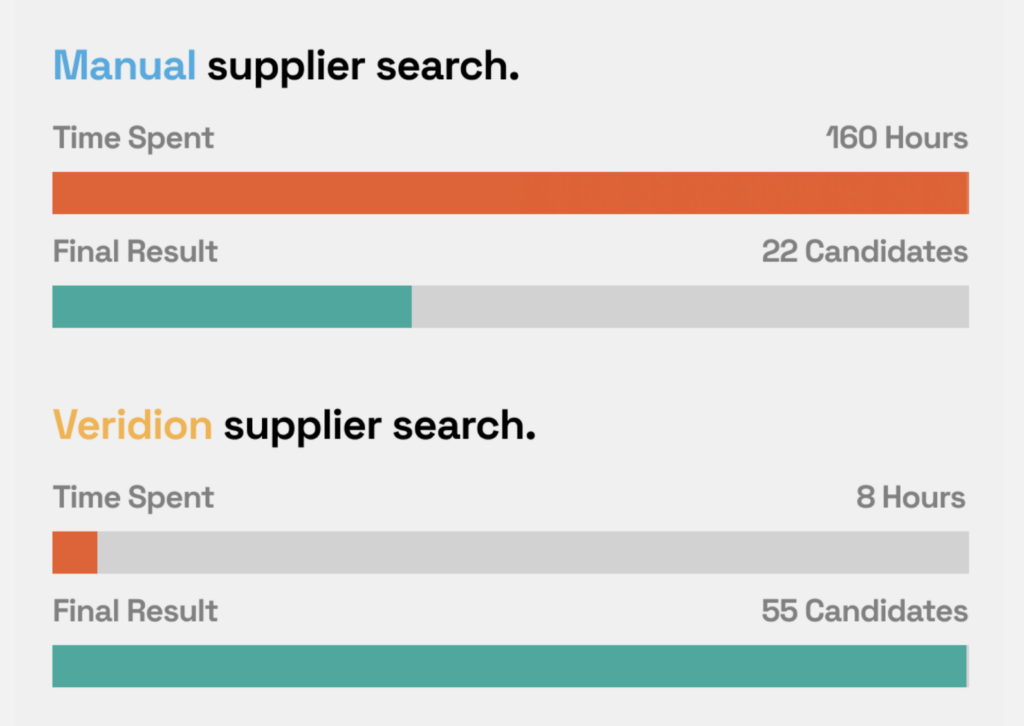
Source: Veridion
Plus, with the newly-developed feature Scout, you can now search using natural language, making it even easier to find suppliers that match your specific criteria.
Overall, using tools with rich supplier databases and sourcing enablement features is essential for building a solid foundation for supplier management.
So, you’ve found the right suppliers—what’s next?
Supplier onboarding tools streamline the process of bringing new suppliers into your system after you’ve selected them, ensuring a smooth transition from sourcing to active collaboration.
They help you collect necessary documentation, verify information, and ensure compliance.
Key features to look for in supplier onboarding tools include:
Now, let’s explore some top onboarding tools that can make your process seamless.
Gatekeeper, for example, lets you build a complete onboarding workflow, including cross-team supplier reviews.
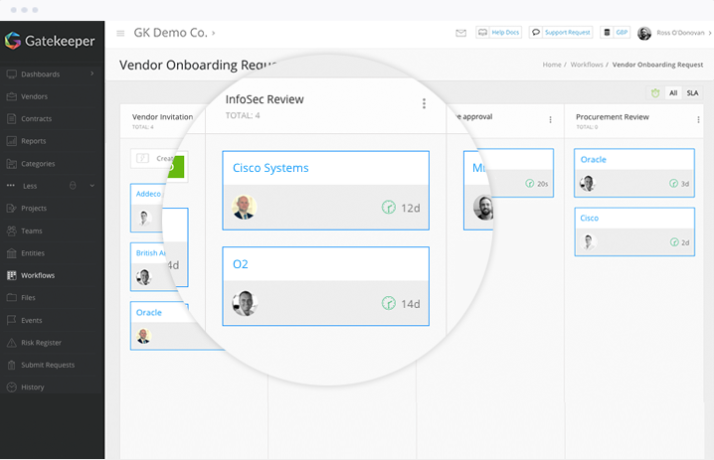
Source: Gatekeeper
With this system, you can:
Other notable tools include HICX, which automates key onboarding steps and offers self-service onboarding.
In other words, suppliers can enter their own information and upload required documents, saving you time and effort.
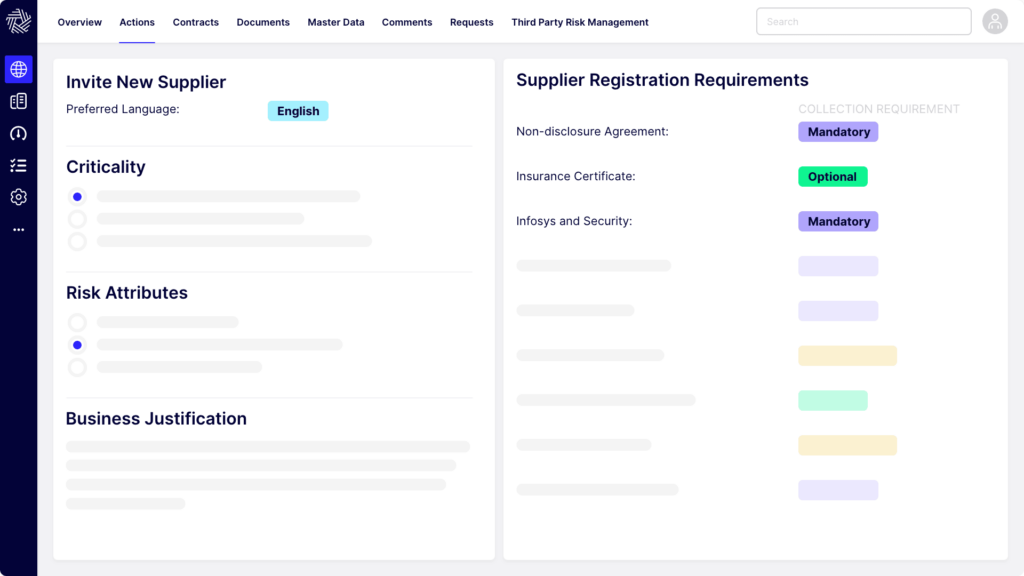
Source: HICX
Throughout the process, this system helps you track the supplier requirements that need to be met, along with a more automated approval process.
Plus, HICX allows you to onboard all of your suppliers, no matter their source.
Precoro is another good example.
This software cuts down on paperwork with customizable supplier registration forms.
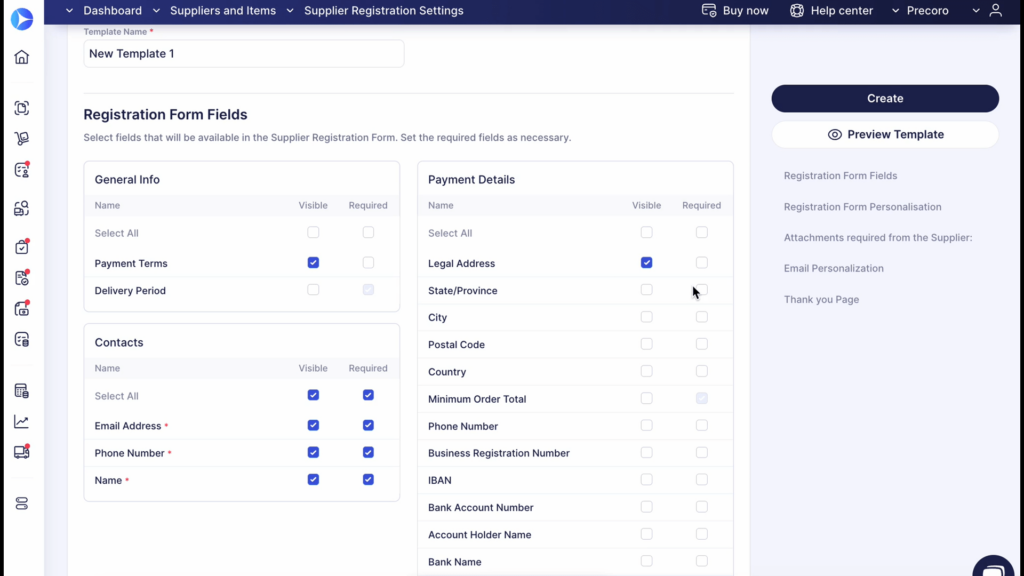
Source: Precoro
This feature helps you create personalized forms to collect up-to-date information from suppliers, improve data accuracy, and speed up the onboarding process.
And, similar to HICX, Precoro offers a supplier portal where suppliers can manage their information, submit documents, and track order statuses, enhancing collaboration and transparency.
In a nutshell, supplier onboarding tools reduce administrative burden, improve compliance, and lay the groundwork for successful long-term partnerships.
When it comes to successful supplier partnerships, thorough performance monitoring is key.
This is where supplier performance management (SPM) tools become invaluable.
These systems help you track supplier performance against agreed-upon metrics, identify potential issues, and drive continuous improvement.
When it comes to features, a detailed but easy-to-navigate performance tracking dashboard is essential.
This should be coupled with key performance indicator (KPI) monitoring and benchmarking for each supplier, allowing you to track metrics like:
Ideally, these monitoring features should be complemented by issue resolution and feedback mechanisms, allowing suppliers to respond to performance concerns and take corrective actions before issues escalate.
A good example of these systems is Aravo, a third-party risk and performance management platform.
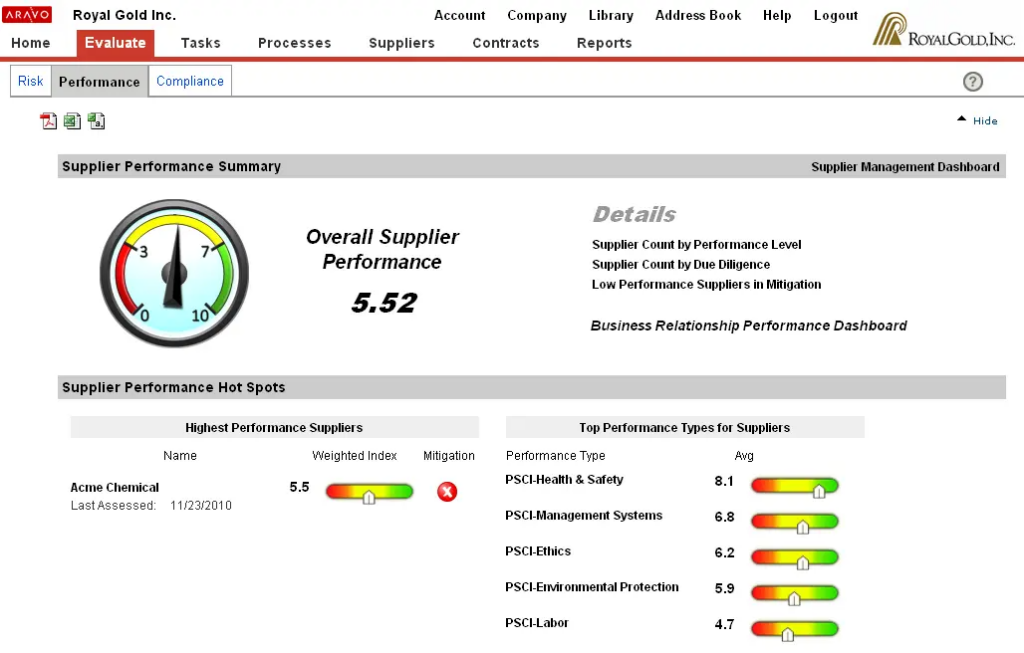
Source: Aravo
Aravo offers a robust supplier scoring system, transforming raw data into performance scores across multiple areas, including the supplier’s management systems, ethics, environmental practices, labor, and so on.
Other features include:
Another option is Ivalua, a comprehensive procurement and spend management system with excellent performance monitoring capabilities.
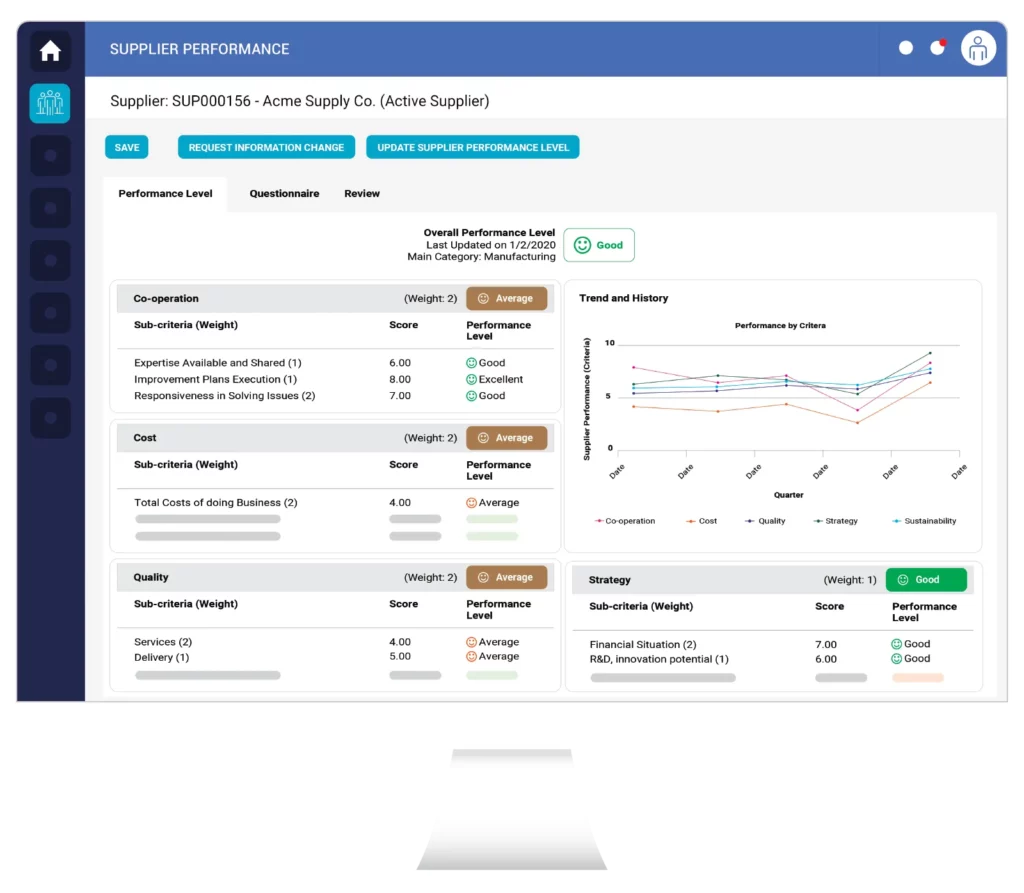
Source: Ivalua
In addition to most features shared with Aravo, Ivalua offers supplier evaluation campaigns with an integrated follow-up system, giving procurement teams and suppliers the necessary structure to remedy any issues.
In fact, with Ivalua, both buyers and suppliers can access and view performance improvement plans themselves, fostering a collaborative approach to performance management.
No matter which of these solutions you choose, performance management tools should help you keep suppliers accountable and your supply chain in top health.
Supplier risk management tools help identify, assess, and mitigate potential supplier-related risks, safeguarding your organization from disruptions and reputational damage.
Similar to performance monitoring systems, effective risk management tools should offer straightforward dashboards.
For instance, the example below shows the risk scores of multiple suppliers for a hypothetical organization, ACME Supply INC.
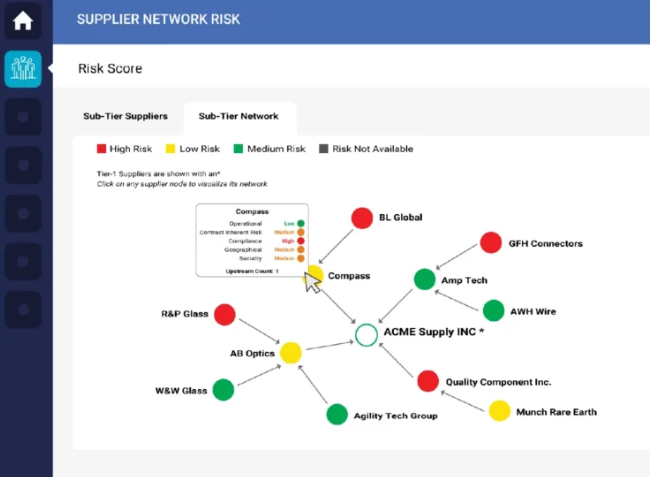
Source: Ivalua
Ivalua’s simple interface allows for a quick assessment of the risk profile of both tier-one and higher-tier suppliers.
Or, consider GEP Smart, which has a detailed dashboard with supplier risk scores shown below.
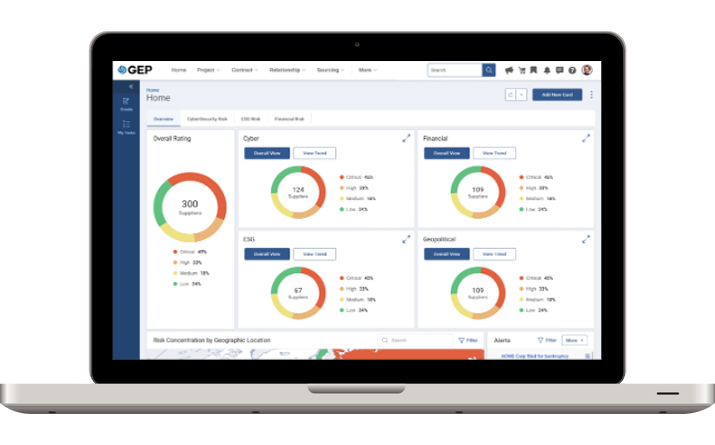
Source: GEP Smart
As illustrated, different scores are assigned according to risk factors, including financial, geopolitical, and cyber risks.
GEP Smart also offers features such as:
Now, when it comes to supplier risk management, high-quality data is paramount.
GEP Smart, for instance, offers an ESG (Environmental, Social, and Governance) risk score, which is crucial for evaluating a supplier’s sustainability and ethical practices.
But, to create accurate ESG evaluations, leveraging sourcing tools to gather comprehensive data is beneficial.
For example, Veridion facilitates risk mitigation by providing detailed, regularly refreshed ESG data on any supplier in our database.
Veridion’s comprehensive ESG data taxonomy is shown below:
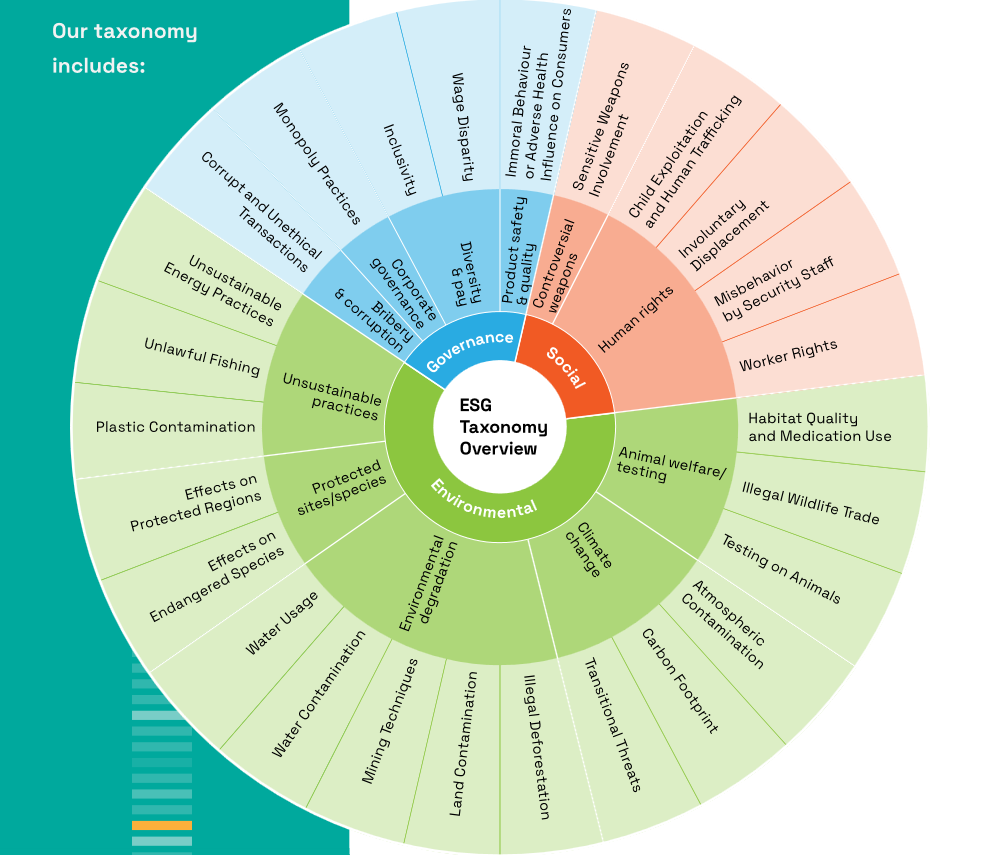
Source: Veridion
We also offer real-time alerts for any key changes in this data.
When used in combination with supplier risk management systems, this allows for immediate action and proactive risk mitigation.
To summarize, implementing robust supplier risk management systems, fueled by accurate and timely data, is essential for protecting your organization from potential disruptions and maintaining a resilient supply chain.
As we approach the end of our list, we mustn’t forget supplier relationship management (SRM) tools.
After all, strong supplier relationships make procurement much easier.
That’s why it’s not surprising that, according to Deloitte’s 2023 Global CPO Survey, supplier collaboration is the top strategy for delivering value to procurement.
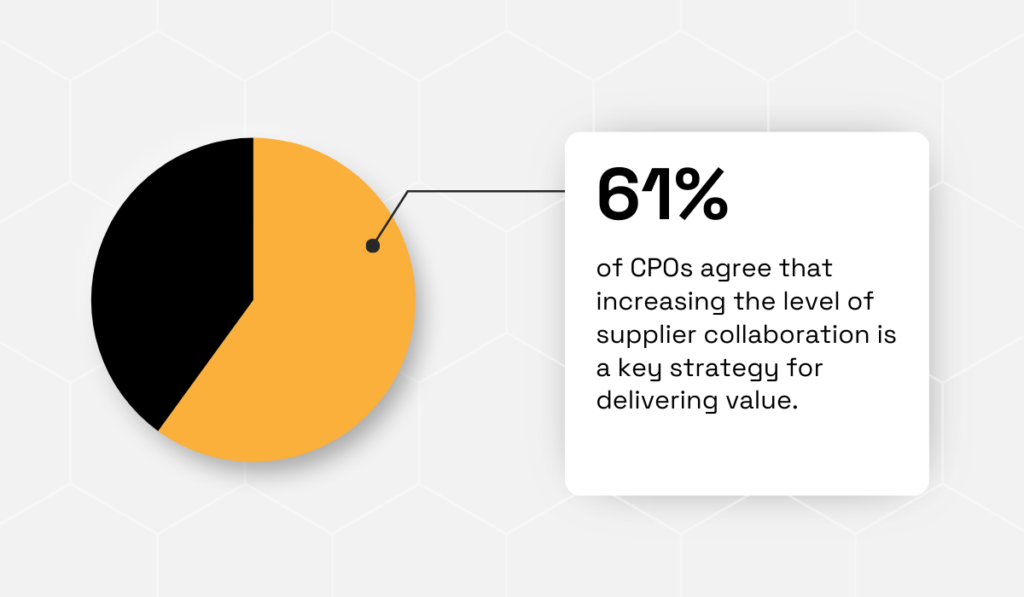
Illustration: Veridion / Data: Deloitte
And SRM tools are essential for implementing this strategy.
In fact, they provide a centralized platform for managing all supplier interactions, from onboarding and performance tracking to communication and collaboration.
That’s why your chosen SRM system should include the following features:
As an example, consider SAP’s relationship management features.
They cover everything from demand generation and procurement to contract negotiation and invoice tracking.
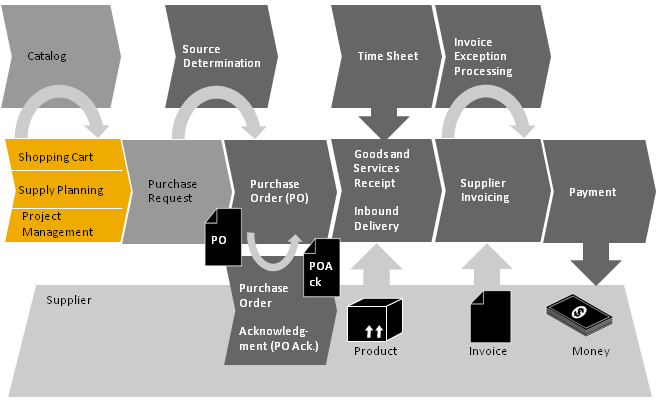
Source: SAP
This system automates key supplier management tasks, such as purchase requests, quality inspection documents, and other essential files—ensuring they reach suppliers without manual effort.
It also helps monitor the delivery of goods and services.
Once a delivery is confirmed, the system automatically generates, verifies, and sends invoices to suppliers.
If any discrepancies arise, exception handling features step in to resolve them.
These features streamline daily transactions between buyers and suppliers, reducing friction and fostering a more efficient and collaborative relationship.
For collaboration and communication, consider Vizibl, a platform designed to foster mutual growth between businesses and their suppliers.
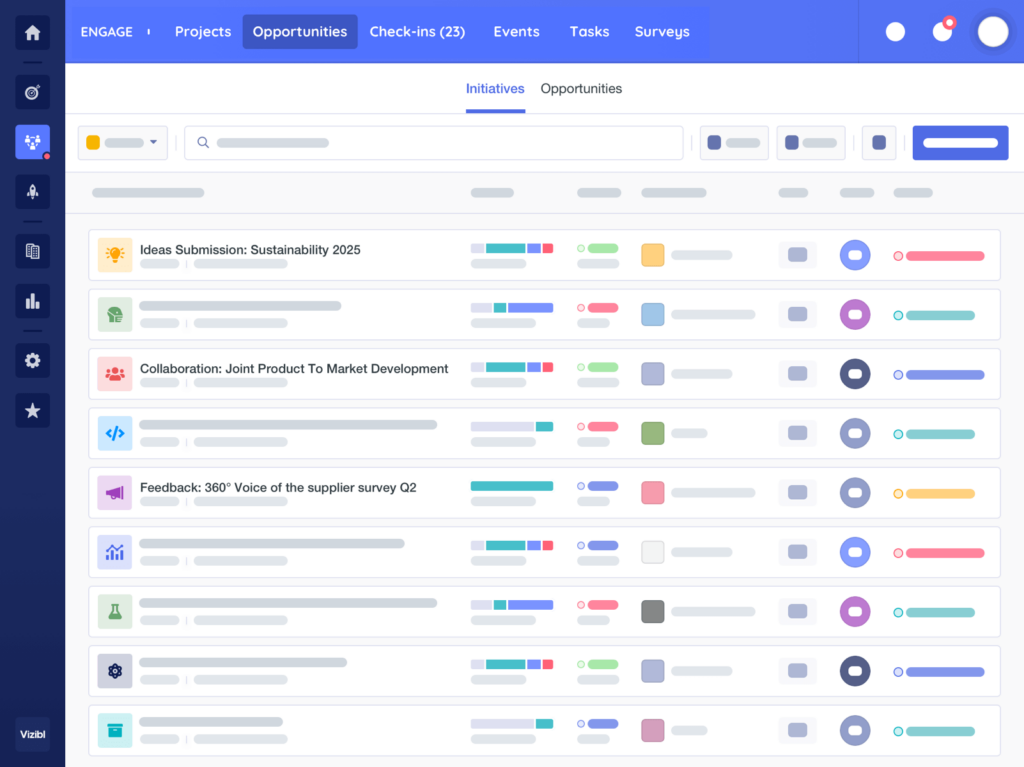
Source: Vizibl
This system centralizes all suppliers on one platform, making it easier to track key strategic partners, align objectives, and streamline communication.
Features like integrated messaging, shared document repositories, and online meeting tools ensure seamless collaboration.
Also, Vizibl emphasizes collaborative innovation, enabling businesses and suppliers to co-develop new products, services, and processes.
All in all, SRM tools are essential for building and maintaining strong supplier relationships by streamlining communication and fostering collaboration between you and your suppliers.
Many of the tools we mentioned today combine different features within a single system.
Some, like Veridion, can be used for multiple purposes, such as enabling better sourcing, performance evaluation, and risk management.
Others aim to provide a complete suite of supplier management functionalities.
Of course, there are pros and cons to using an all-in-one system compared to separate, specialized tools, concisely summarized in this table:
| Criteria | All-in-One System | Separate Tools |
|---|---|---|
| Ease of Use | Unified interface, reduced complexity | Multiple logins/interfaces, harder to navigate |
| Integration | Seamless data flow across functions | Risk of integration issues between tools |
| Cost | Higher upfront cost | Lower initial cost, but may add up |
| Customization | Limited flexibility in feature modifications | More customizable by picking best-in-class tools |
| Implementation | Longer setup due to system-wide integration | Faster to implement individual tools as needed |
| Vendor Lock-in | Dependence on a single provider | Flexibility to switch specific tools if needed |
| Feature Depth | May have general features instead of deep specialization | Can use best-in-class solutions for each function |
One example of an all-in-one platform is SupplierGateway, a cloud-based solution designed to streamline supplier management processes.
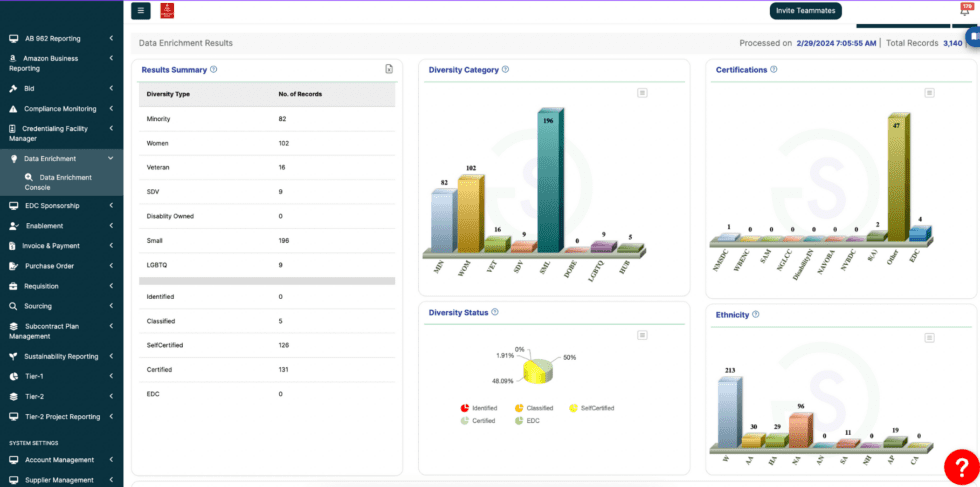
Source: SupplierGateway
Key features for supplier management within SupplierGateway include:
In other words, SupplierGateway covers the entire supplier management lifecycle, from initial onboarding and data enrichment to ongoing performance monitoring and sustainability assessments.
However, as noted in the comparison table, while offering a complete system, it may not provide the same depth of functionality as specialized tools.
For example, SupplierGateway’s data enrichment feature, while robust, might not possess the same breadth and depth of data as a dedicated system like Veridion.
Another example is JAGGAER One, a comprehensive source-to-pay platform that integrates all aspects of procurement and supplier management.
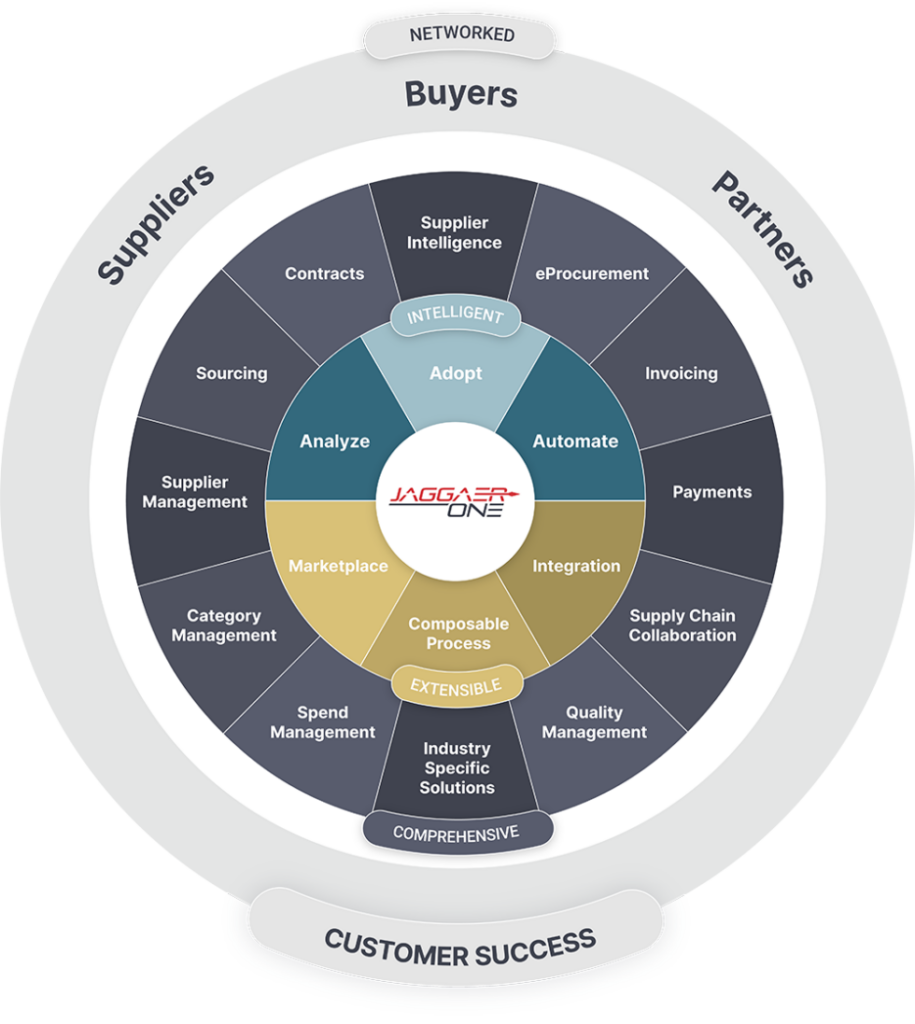
Source: JAGGAER
JAGGAER One offers an end-to-end solution, connecting sourcing, contracting, procurement, invoicing, and supplier management within a single platform.
This streamlines processes, improves visibility, and facilitates better collaboration between stakeholders.
As a final note, when choosing between an all-in-one platform and separate specialized systems, consider your specific needs and goals.
If you need a streamlined, integrated approach—especially with limited IT resources or a simpler supply chain—an all-in-one solution may be the best fit.
However, larger enterprises with complex operations often benefit from best-of-breed solutions, which offer specialized features for areas like risk management or sourcing.
So, carefully evaluate your needs and choose the tool that best aligns with your organization’s size, complexity, and strategic priorities.
And there you have it—six different types of tools that can significantly improve your supplier management and procurement operations.
The tools you choose should be tailored to your specific needs and priorities, whether it’s a better initial sourcing and onboarding process, more thorough performance and relationship management, or all of the above.
Looking ahead, you should also keep an eye on emerging trends like AI, automation, and predictive analytics, which promise to revolutionize supplier management further and unlock even greater efficiencies.
So, stay informed and adapt to these advancements, and you can ensure your procurement processes remain cutting-edge and drive continued success.